Lecture 10 | New Revolutions in Particle Physics: Standard Model
TLDRThe transcript appears to be a lecture on advanced topics in particle physics, focusing on the Higgs boson, supersymmetry, and the unification of fundamental forces. The lecturer discusses the Higgs mechanism, which is responsible for giving particles their mass through spontaneous symmetry breaking. They delve into the mathematical formulations underlying the behavior of fermions and the role of the Higgs field. The lecture also touches on the concept of renormalization, where parameters such as mass and charge are altered due to interactions at different energy levels. Furthermore, the lecturer explores the possibility of a grand unified theory that consolidates the electromagnetic, weak, and strong nuclear forces, hinting at the energy scales where these forces may converge. The discussion also briefly mentions the Planck length and the intriguing question of why the fundamental mass scale in particle physics is much smaller than other known mass scales, such as the Planck mass. The lecture is rich with technical details and is likely aimed at an audience with a background in physics.
Takeaways
- 📚 The concept of gauge hierarchy in theoretical physics is a key puzzle that may be explored in future studies, involving the relationship between supersymmetry and various paradoxes or difficulties in current theories.
- 🔬 The standard model of particle physics includes forces such as weak, electromagnetic, and strong, represented by groups SU(3), SU(2), and U(1), which may fit into a larger structure like SU(5), suggesting a unified framework for these forces.
- 🧬 Supersymmetry and unification theories attempt to explain puzzling features of particle physics and how particles like quarks and leptons can be part of the same multiplets.
- 🧭 The Large Hadron Collider (LHC) was primarily designed to discover the Higgs boson, which is related to the masses of fermions and has various properties that define its identity.
- 🤔 The Dirac equation and its Lagrangian describe the behavior of fermions, and the mass term in the Lagrangian is responsible for the conversion between left-handed and right-handed particles.
- 🤓 The Higgs mechanism, involving the Higgs field and its potential, gives mass to particles like the W and Z bosons, and the Higgs boson itself, through spontaneous symmetry breaking.
- 🔑 The Higgs boson's decay rates and interactions with other particles can be predicted once its properties are known, providing a way to experimentally confirm the theory.
- 🔍 The running of electric charge with distance is a phenomenon in quantum field theory due to vacuum polarization, which affects the observed strength of interactions at different energy scales.
- ✨ The concept of renormalization in quantum field theory involves adjusting parameters like electric charge to maintain consistency with experimental observations at different energy levels.
- ⚛️ Strong interactions between quarks, described by quantum chromodynamics (QCD), behave differently at short distances, with the force increasing with the distance between quarks due to the self-interaction of gluons.
- ⚖️ The gravitational force, according to general relativity, becomes comparable to other fundamental forces at the Planck scale, suggesting a possible unification of forces at very high energies or small distances.
Q & A
What is the gauge hierarchy problem in theoretical physics?
-The gauge hierarchy problem refers to the large discrepancy between the strength of gravity and the other fundamental forces. It's a challenge to explain why the observed Planck scale (associated with gravity) is many orders of magnitude larger than the electroweak scale (associated with the other forces).
How does supersymmetry potentially resolve some of the puzzling features of a theory?
-Supersymmetry is a theoretical concept that proposes a relationship between bosons (particles with integer spin) and fermions (particles with half-integer spin). It can potentially stabilize the Higgs boson mass and resolve some of the hierarchy problems by balancing the contributions to the mass from quantum corrections.
What is the significance of the group SU(5) in particle physics?
-SU(5) is a grand unified theory (GUT) group that suggests a unification of the strong, weak, and electromagnetic forces. It contains the subgroups SU(3) for strong interactions, SU(2) for weak interactions, and U(1) for electromagnetic interactions, indicating that these forces may be part of a larger structure.
What is the Higgs boson and why is its discovery important?
-The Higgs boson is a particle in the Standard Model of particle physics that is responsible for giving other particles mass through the Higgs mechanism. Its discovery is not only about finding a new particle but also about confirming the properties that are related to its role in giving mass to fermions.
How is the Lagrangian for the Dirac equation derived?
-The Lagrangian for the Dirac equation can be derived by multiplying the Dirac equation by the Dirac adjoint (ψ̄). This process results in a Lagrangian that, when varied with respect to the Dirac adjoint, yields the Dirac equation as the equation of motion.
What is the role of the Higgs field in the generation of particle masses?
-The Higgs field, through its interaction with particles, is responsible for giving them mass. When the Higgs field acquires a non-zero vacuum expectation value due to spontaneous symmetry breaking, it leads to the generation of masses for the W and Z bosons, and through Yukawa couplings, for fermions as well.
What does the term 'spontaneous symmetry breaking' refer to in the context of the Higgs mechanism?
-Spontaneous symmetry breaking in the context of the Higgs mechanism refers to the process by which the Higgs field acquires a non-zero vacuum expectation value, which leads to the violation of certain symmetries and the generation of masses for particles that interact with the Higgs field.
What is the role of the Z boson in the weak interaction?
-The Z boson is a carrier particle for the weak interaction, responsible for mediating the force between fermions. It couples preferentially to left-handed fermions, which is a key feature of the weak interaction's chiral nature.
What is the concept of 'running coupling constants' in quantum field theory?
-Running coupling constants refer to the idea that the strength of interactions between particles, as described by coupling constants, changes with the energy scale at which the interaction is probed. This effect is due to the renormalization group and is a fundamental aspect of quantum field theory.
Why does the force between quarks grow linearly with the separation between them?
-The force between quarks grows linearly with separation due to the non-Abelian nature of the strong interaction, governed by quantum chromodynamics (QCD). This is a result of the self-interaction of gluons, which leads to the formation of 'flux tubes' or 'strings' between quarks, the energy of which increases with the distance between the quarks.
What is the significance of the Planck length in physics?
-The Planck length is significant because it is the scale at which the gravitational force between particles becomes comparable to or even stronger than the electromagnetic force. This suggests that at very small distances, quantum effects of gravity become important and the classical description of gravity may no longer be adequate.
Outlines
😀 Introduction to Theoretical Physics Concepts
The speaker begins by discussing the future topics of their lectures, including the gauge hierarchy problem and the role of supersymmetry in addressing theoretical difficulties. They delve into the concept of unification of forces, specifically mentioning the groups SU(3), SU(2), and U(1), and introduce the idea of a larger structure, SU(5), which could encompass these groups. The discussion also touches on the significance of the Higgs boson and its connection to the masses of fermions, as well as the Dirac equation and Lagrangian.
🧐 Exploring the Dirac Equation and its Mathematical Formulations
The paragraph delves deeper into the mathematical formulation of the Dirac equation, discussing the use of covariant language and the role of Dirac matrices. It explains the concept of the Lagrangian for the Dirac field and the significance of kinetic terms and mass terms in the equation. The speaker also introduces the gamma matrices and their relation to the Dirac equation, providing an elegant form of the equation involving these matrices.
🔬 The Role of Chirality and the Higgs Mechanism
This section focuses on the concept of chirality in particle physics, the role of the gamma 5 matrix, and its implications for the handedness of particles. The discussion then shifts to the weak interactions, particularly the Z boson, and how it interacts differently with left-handed and right-handed particles. The Higgs mechanism is introduced as a means to give mass to fermions, with an emphasis on the spontaneous symmetry breaking and the Mexican hat potential of the Higgs field.
🤔 The Higgs Boson and Fermion Masses in the Standard Model
The speaker discusses the Higgs boson's role in providing mass to fermions through the Higgs mechanism. They explain how the Higgs field's expectation value leads to the generation of fermion masses and how the Higgs boson's properties are related to the masses of the W and Z bosons. The concept of coupling constants and their significance in determining fermion masses is also explored.
🧬 Predictive Power of the Higgs Theory and Decay Rates
The paragraph explores the predictive power of the Higgs theory, particularly in relation to the decay rates of the Higgs boson. It discusses how the discovery of the Higgs boson would allow for the prediction of its decay rates into various fermion-antifermion pairs. The speaker also touches on the process of calculating decay rates using Feynman diagrams and the importance of coupling constants and particle masses in these calculations.
🌌 Unification of Forces and the Role of the Higgs Field
The speaker discusses the concept of unification of forces within the standard model of particle physics, suggesting that the coupling constants for the electromagnetic, weak, and strong forces may converge at a high energy scale. This implies a potential unification of these forces at the Planck scale. The paragraph also explores the dynamics of the Higgs field and its potential, emphasizing the importance of the Mexican hat potential in determining the Higgs field's behavior.
🤓 The Concept of Running Charge and Renormalization
The paragraph introduces the concept of running charge, where the effective charge of particles changes with the energy scale due to vacuum polarization effects. The speaker explains how this phenomenon is observed in quantum electrodynamics and how it leads to a modification of the electric charge at different distances or energies. The discussion also touches on the self-interaction of gluons in quantum chromodynamics and its contrasting effect on the running of the strong force's coupling constant.
🔍 The Planck Length and the Unification of Interactions
The speaker explores the significance of the Planck length, where gravitational forces become comparable to electromagnetic forces. They discuss the implications of this for the unification of the fundamental forces of nature and the potential importance of understanding why the Higgs field's vacuum expectation value is so small compared to the Planck scale. The paragraph also raises questions about the natural mass scale for particle physics and the possibility of other mass scales in the universe.
🧲 The Self-Interaction of Gluons and Asymptotic Freedom
The paragraph delves into the self-interaction of gluons in quantum chromodynamics, which results in a force that grows with the distance between quarks, contrary to the behavior of electric charges. The speaker discusses the phenomenon of asymptotic freedom, where the strong force's coupling constant decreases at high energies, allowing quarks to behave almost as free particles at very short distances.
📚 Conclusion and Invitation to Further Studies
The speaker concludes the discussion by emphasizing the importance of understanding the behavior of the Higgs boson and the unification of forces. They invite the audience to learn more about these topics through further studies and provide information on where to find more resources, such as visiting stanford.edu for additional information.
Mindmap
Keywords
💡Gauge hierarchy
💡Supersymmetry
💡Unification of forces
💡Higgs boson
💡Dirac equation
💡Lagrangian
💡Spontaneous symmetry breaking
💡Chirality
💡Quantum field theory
💡Running coupling constants
💡Planck scale
Highlights
Discussion on the gauge hierarchy problem and the potential integration of supersymmetry to resolve theoretical difficulties.
Introduction to the concept of unification of forces, specifically SU(3), SU(2), and U(1), and the possibility of a larger structure, SU(5), encompassing these subgroups.
Exploration of the Higgs boson's role in particle physics, including its discovery and the implications for understanding fermion masses.
Derivation of the Dirac equation using variational principles and its relation to the Lagrangian for the Dirac field.
Explanation of the properties of the Higgs boson and how it is related to the masses of fermions through the Higgs mechanism.
Discussion on the chirality of particles and the role of the gamma 5 matrix in distinguishing left-handed and right-handed particles.
Insight into the weak interactions, particularly the Z boson's interaction being limited to left-handed particles.
The significance of spontaneous symmetry breaking in the Higgs field and its impact on the mass of the W and Z bosons and fermions.
Description of the Higgs potential's 'Mexican hat' shape and its implications for the Higgs field acquiring an expectation value.
Calculation of the Higgs boson's decay rates using Feynman diagrams and the standard model of particle physics.
Analysis of the running of electric charge with respect to distance, a phenomenon known as renormalization in quantum field theory.
Comparison of the force laws between quarks in quantum chromodynamics to those in electrodynamics, highlighting the unique behavior of gluons.
Prediction that the coupling constants of the strong, weak, and electromagnetic forces may converge at a high energy scale, suggesting a possible unification.
Discussion on the behavior of gravity at small distances, where it becomes stronger due to the increase in energy of interacting particles.
Estimation of the Planck length, where gravitational forces become comparable to or exceed electromagnetic forces.
Reflection on the small value of the Higgs vev (F) and its fine-tuning problem, which is crucial for understanding the mass of elementary particles.
The potential unification of forces at the Planck scale and its significance in the context of particle physics and quantum gravity.
Transcripts
Browse More Related Video

Special Relativity | Lecture 5
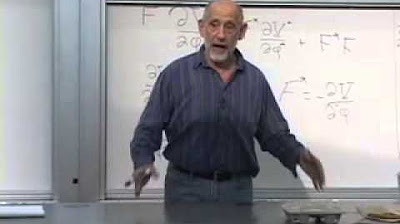
Supersymmetry & Grand Unification: Lecture 9
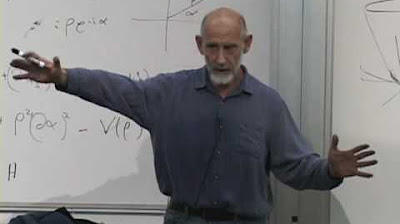
Lecture 8 | New Revolutions in Particle Physics: Standard Model
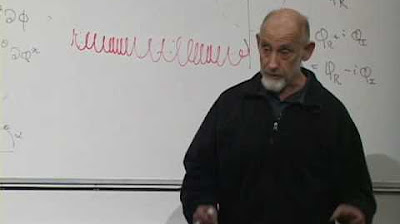
Lecture 7 | New Revolutions in Particle Physics: Standard Model
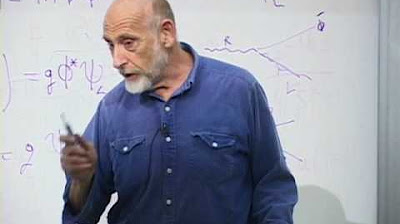
Lecture 9 | New Revolutions in Particle Physics: Standard Model
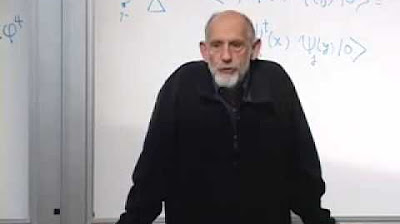
Supersymmetry & Grand Unification: Lecture 3
5.0 / 5 (0 votes)
Thanks for rating: